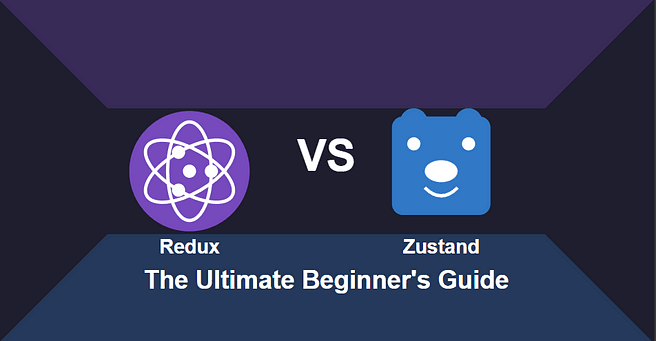Introduction
-
State management is a crucial part of modern frontend development. If you’ve built applications with React, you’ve probably heard of Redux — one of the most popular state management libraries. However, Zustand has recently gained popularity for being simpler and more intuitive.
-
So, how do these two compare? Which one should you use? Let’s break it down in a way that even a child can understand!
What is State Management?
-
Imagine you are playing a game where you collect coins. The number of coins you collect needs to be stored somewhere so that it doesn’t reset every time you move to a new level.
-
State management in React is like a notebook that keeps track of your game’s progress. It helps you store and update information across different parts of your app.
-
Now, Redux and Zustand are two different ways of managing this notebook. Let’s see how they work!
What is Redux?
Redux is like a strict teacher who makes sure everything is organized. It follows a set of rules:
-
You store your data in a single object called the store.
-
To change data, you have to ask for permission using something called actions.
-
These actions are handled by reducers, which are like rule books that decide how the state should change.
How Redux Works
Imagine you have a piggy bank, and you want to add or remove coins.
-
Store → The piggy bank where coins are stored.
-
Action → A note saying “Add 10 coins” or “Remove 5 coins”.
-
Reducer → The rule book that says, “If the action says ‘add,’ increase the number of coins.”
-
Dispatch → A messenger that sends the action to the reducer.
Redux Code Example
javascript1import { createStore } from “redux”; 2 3// Step 1: Define the initial state 4const initialState = { count: 0 }; 5 6// Step 2: Create a reducer (rule book) 7function counterReducer(state = initialState, action) { 8 switch (action.type) { 9 case “INCREMENT”: 10 return { count: state.count + 1 }; 11 case “DECREMENT”: 12 return { count: state.count — 1 }; 13 default: 14 return state; 15 } 16} 17 18// Step 3: Create the store 19const store = createStore(counterReducer); 20 21// Step 4: Dispatch actions (asking for state change) 22store.dispatch({ type: “INCREMENT” }); 23console.log(store.getState()); // { count: 1 } 24 25store.dispatch({ type: “DECREMENT” }); 26console.log(store.getState()); // { count: 0 }
🔴 Problem with Redux
-
Too much boilerplate (reducers, actions, dispatch).
-
More setup for simple state management.
-
Can be overkill for small projects.
What is Zustand?
Zustand is like a friendly notebook where you can just write down whatever you need, without needing a middleman (reducers, actions).
-
No boilerplate — just a simple function!
-
Direct updates — you don’t need reducers or actions.
-
Lightweight and fast — works with small and large projects.
How Zustand Works
Imagine you have a magic notebook where you can write and update your state directly.
-
Store → A notebook where you store your information.
-
State Updater → A simple function to update the notebook.
Zustand Code Example
javascript1import { create } from “zustand”; 2 3// Step 1: Create the store 4const useCounterStore = create((set) => ({ 5 count: 0, 6 increment: () => set((state) => ({ count: state.count + 1 })), 7 decrement: () => set((state) => ({ count: state.count — 1 })), 8})); 9 10// Step 2: Use the store in a React component 11function Counter() { 12 const { count, increment, decrement } = useCounterStore(); 13 14 return ( 15 <div> 16 <h1>Count: {count}</h1> 17 <button onClick={increment}>Increase</button> 18 <button onClick={decrement}>Decrease</button> 19 </div> 20 ); 21} 22 23export default Counter;
🟢 Zustand Advantage Over Redux
-
Much simpler than Redux!
-
No reducers, no actions, just state and functions.
Differences B/W Redux and Zustand

When to Use Redux vs Zustand?
Use Redux if:
-
You are working on a large-scale app.
-
You need strict state management with middleware.
-
Your team already uses Redux.
Use Zustand if:
-
You want a simple, easy-to-use state manager.
-
You are working on small to medium-sized apps.
-
You don’t want extra boilerplate code.
Conclusion
Both Redux and Zustand are great tools, but Zustand is much simpler and easier to use for most projects. If you are a beginner, start with Zustand and learn Redux when you need more complex state management.
🔵 Zustand → Simple and fast!
🔴 Redux → Powerful but complex!
